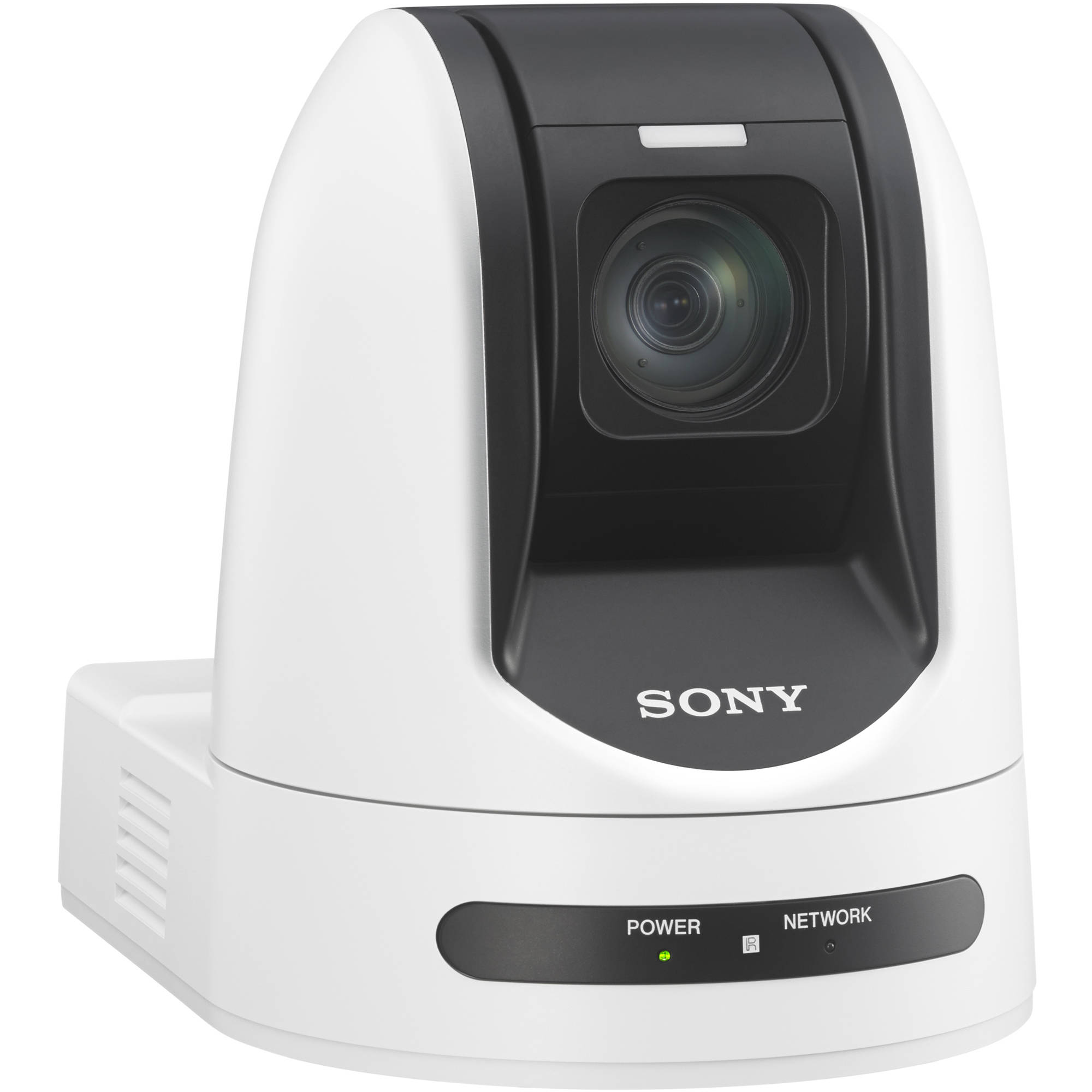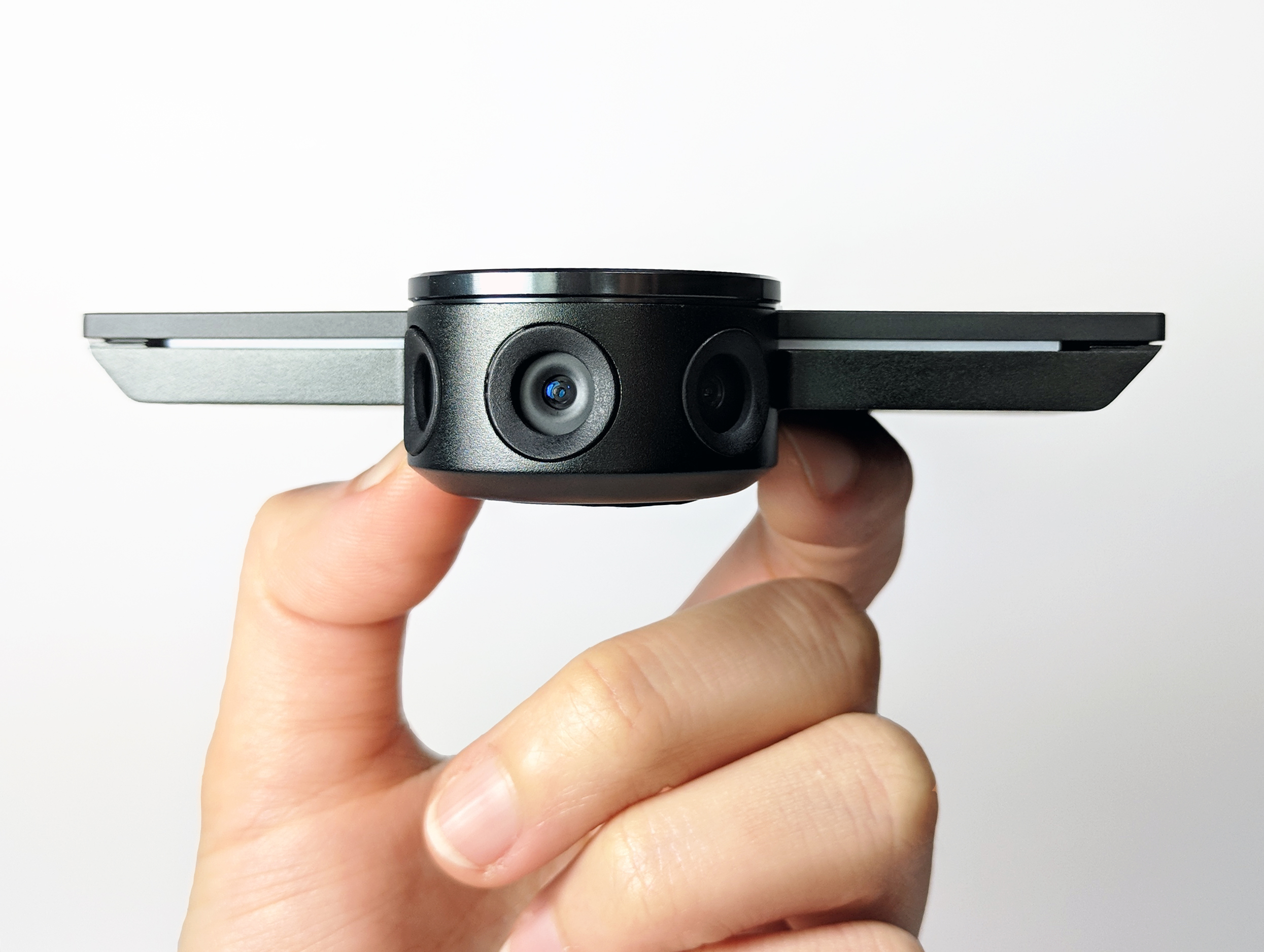It’s safe to say that the collective tolerance for bad video is increasingly low. With everyone from YouTubers to small to mid-sized businesses creating studio-grade content, enterprise-level organizations are under pressure to produce video communications that rival the big networks… and even the big studios. At the same time, just because you’re striving to achieve cinematic quality doesn’t mean you have the budget to invest in cinema cameras. Manufacturers are aware of this, and have developed a number of products designed to deliver slick video at a more accessible price point. Here are a few to consider:
VADDIO ROBOSHOT 40 UHD
A broadcast-quality PTZ camera, Vaddio’s RoboSHOT 40 UHD features 40x zoom and a genlock external sync port, designed to deliver accurate synchronization in multi-camera environments. (This feature also includes phase compensation to adjust and fine-tune the genlock signal.) It will provide 4K resolution at 30fps through 30x zoom, and an 1/2.5-type Exmor R back-illuminated CMOS image sensor. The camera incorporates the manufacturer’s next-generation silent motor and tri-synchronous motion algorithms designed to eliminate jitter and bouncing (even at full zoom).

Beth Peterson, product marketing manager at Vaddio, touts not only the image quality the RoboSHOT 40 delivers, but also the smoothness of movement. “When you’re watching a movie, you’ve got that smooth pan across the horizon,” she illustrated. “You can experience that with high-quality PTZ cameras now. Really, it’s like natural eye movement, instead of [the camera] moving over, then up, then in. This [camera] is doing that all at the same time, so you getting the same experience as you would if you were watching a television show.”
www.vaddio.com
SONY SRG NETWORK CAMERAS
Sony’s SRG Series of network cameras are well suited for lecture capture and corporate applications, as well as those common in the medical field. The SRG-360SHE delivers Full HD (1080p60) video with IP networking capabilities, as well as 3G-SDI and HDMI outputs that can provide simultaneous feeds––a triple-streaming solution for users that wish to display content on a connected monitor, stream live to the web, and record for editing and archiving at the same time. Users may synchronize pan, tilt, and zoom so that they start and stop in unison, and preset camera positions can be stored for recall.

In the medical field, these cameras are used for remote monitoring of patients, as well as for training purposes. Mark Barron, product manager at Sony Medical, also notes that the SRG Series enables doctors, colleagues, and students to communicate on the spot. “A typical use case might [have] a doctor in his office, and maybe he’s looking in on a med student or a colleague [who is with a patient],” he illustrated. “[The doctor] has got to be able to view not only the overall scene of where the patient is in relation to the doctors and the technicians, but he may also need to zoom in and get a better view of the surgery itself. Pan/tilt/ zoom and the really high quality of HD are two important features.”
pro.sony.com
PANASONIC AW-UE150
The AW-UE150 is a 4K integrated remote camera that offers 4K/UHD 60p capture, and affords the widest viewing angle (75.1 degrees, horizontal) in its class, according to the company. With an HDR mode, support of various 4K interfaces, and simultaneous 4K/HD output, the UE150 is targeted at higher-end applications in broadcast, production, corporate, events and staging, education, house of worship, and more.

The UE150 incorporates a 1-inch large MOS sensor, 20X optical zoom, and seamless intelligent zoom (i Zoom). The 4K interfaces supported include 12GSDI, HDMI, optical fiber, and IP. Other key features include HD crop from 4K picture, PoE++ power supply support, seamless x32iA zoom (HD, UHD:x24), high-speed Pan/Tilt mode, largesize tally, NDI|HX support, and a new web UI. The new AW-RP150 remote camera controller will be compatible with the UE150 as well as Panasonic’s higher-end PTZs.
“The UE150 is a step-up in resolution, lensing, and interfacing, presenting a clear 4K upgrade path and a new workflow for such premium PTZ applications as high-end enterprise and broadcast/production applications,” said Michael Bergeron, product manager studio/system cameras, Panasonic System Solutions Company.
na.panasonic.com
ALTIA SYSTEMS PANACAST 3
Altia Systems recently launched the Panacast 3, a 180-degree panoramic 4K plug-and-play video system for corporate and collaborative applications. An array of cameras in one unit, the PanaCast 3 approaches image capture much like the human eye, according to Aurangzeb Khan, Altia’s cofounder, president, and CEO. “When you look at our device you won’t see scale distortion, meaning that if you’re [looking at] the left extreme or the right extreme [of the image], people and objects will look the correct size,” he said.

The system is comprised of three 13-megapixel cameras, stereo microphones, and software. The PanaCast Vision Processor captures the entire room, enabling the unit to deliver video over a 180-degree field of view at panoramic 4K resolution without distortion. Its Intelligent Zoom feature automatically adjusts to ensure that all meeting participants are included in the field of view. It can be mounted to any digital display or on a wall, features a USB-C connection, and is compatible with popular collaboration software such as Microsoft Teams, Skype, Zoom, Cisco WebEx, Slack, Google Hangouts, and GoToMeeting.
Khan noted that PanaCast 3’s people-detection functionality (achieved through a partnership with Intel that resulted in Advanced People Detection and Counting technology) delivers valuable information on room usage and occupancy. (Users may access this information via the PanaCast API, or the PanaCast Vision app.) The AI software can count the number of people on camera (up to 40 feet away).
“AV technology is tied into IT technology, and people not only want a great audio-video experience, they also want to get information,” Khan said. “This whole AI application and those technologies are just going to continue to expand.”
www.panacast.com
Zooming In: Choosing the Right Camera
Cameras abound, and which one you purchase depends on your application. To narrow the choices down, tech managers need to ask themselves a few key questions.
“Regardless of what you’re shooting, you need to consider what your shooting environment is,” said Steve Cooperman, senior product manager at Panasonic. For example, large, heavy cameras are O.K. on a sound stage, but they’re more cumbersome for those operating on the fly. Cooperman also urges tech managers to define their deliverables: “Will [the images] be on a big screen? Will they be viewed on a smartphone, or a laptop?”
“Your room size is going to dictate some of things you need to consider in a camera,” said Terry Huber, senior marketing manager for network cameras at Sony. “You also have to consider your lighting situation––how sensitive the camera needs to be, how much light you’re going to have, [and] if there will be back-lighting.” She adds that aside from capturing quality images, there are other functions to take into account: “Do you need it to stream? Do you need it to go over a network? Those are some of the questions you start asking.”